Articles
- Page Path
- HOME > J Powder Mater > Volume 32(1); 2025 > Article
-
Research Article
3D 프린팅을 이용한 티타늄/아크릴아마이드 기반 하이드로젤 나노복합소재 신축 전극 - 최세진1,2, 이한얼1,2,3,*
- 3D-Printed Stretchable Electrodes Enabled by a Titanium/Acrylamide-Based Hydrogel Nanocomposite
- Se Jin Choi1,2, Han Eol Lee1,2,3,*
-
Journal of Powder Materials 2025;32(1):67-72.
DOI: https://doi.org/10.4150/jpm.2024.00465
Published online: February 28, 2025
1전북대학교 신소재재공학부
2전북대학교 JBNU-KIST 산학연융합학과
3전북대학교 전자∙정보공학부
1Division of Advanced Materials Engineering, Jeonbuk National University, 567 Baekje-daero, Deokjin-gu, Jeonju-si, Jeonbuk State, 54896, Republic of Korea
2Department of JBNU-KIST Industry-Academia Convergence Research, Jeonbuk National University, 567 Baekje-daero, Deokjin-gu, Jeonju-si, Jeonbuk State, 54896, Republic of Korea
3Division of Electronics and Information Engineering, Jeonbuk National University, 567 Baekje-daero, Deokjin-gu, Jeonju-si, Jeonbuk State 54896, Republic of Korea
- *Corresponding author: Han Eol Lee E-mail: haneol@jbnu.ac.kr
© The Korean Powder Metallurgy & Materials Institute
This is an Open Access article distributed under the terms of the Creative Commons Attribution Non-Commercial License (http://creativecommons.org/licenses/by-nc/4.0/) which permits unrestricted non-commercial use, distribution, and reproduction in any medium, provided the original work is properly cited.
- 591 Views
- 15 Download
Abstract
- Wearable electronics have been the focus of considerable interest in various fields, such as human-machine interfaces, soft robotics, and medical treatments, due to their flexibility, stretchability, and light weight. To address the shortcomings of existing metal thin film-based wearable devices, stretchable conductive polymers have been developed. In particular, double networking hydrogels are being actively studied as a polymer with a three-dimensional stereoscopic structure that can be patterned. Nonetheless, they have shortcomings such as poor electrical properties and cumbersome manufacturing processes, making it difficult to apply them in electronic devices. Herein, we report 3D-printed stretchable electrodes enabled by a titanium/polyacrylamide-alginate-based hydrogel nanocomposite. This research suggests the strategy for resolving the challenges of high costs and complex fabrication processes associated with stretchable electrode, providing a solution to accelerate the commercialization of wearable electronic devices.
- 4차산업의 도래와 함께HMI (Human-Mahchine Interface), 로봇 산업, 의료 기기 분야 등 다양한 분야의 산업이 크게 성장하였다. 이러한 산업 발전의 중심에는 웨어러블 디바이스의 등장이 큰 역할을 수행하였다. 웨어러블 기기는 인체에 부착되어 인간과 상호작용하며 신호를 감지 및 분석하기 때문에, 유연하고 신축성을 가지며 가벼운 특성을 가져야 한다. 기존의 웨어러블 기기는 유연 기판에 박막 형태의 금속 전극을 형성하여 소자의 유연성을 확보하는 방식이 대부분이었다. 그러나 전통적으로 금속 박막을 제조하는 방식인 화학기상증착 (chemical vapor depositionl CVD), 물리기상증착 (physical vapor deposition; PVD) 등의 공정은 값비싼 비용과 복잡한 공정 과정을 필요로 한다는 단점 및 신축성을 지니기 어렵다는 문제점이 존재한다 [1, 2]. 이러한 금속 박막 기반 디바이스의 단점을 해결하기 위해, 신축 전도성 고분자를 이용한 웨어러블 디바이스가 떠오르고 있다.
- 다양한 고분자 소재 중에서도 이중 네트워킹 하이드로젤은 3차원 입체구조의 고분자로써, 합성이 간단하며 신축성, 억셈, 접착성 등 기계적 특성이 우수하다는 장점으로 인해 최근 연구가 활발히 진행되고 있다. 하지만, 부족한 전기적 특성, 번거로운 공정 과정 등의 단점이 여전히 존재하여 전자 소자로써의 응용에 어려움을 겪고 있다 [2, 3]. 많은 연구진들이 하이드로젤 고분자의 부족한 전기적 특성 증대 및 전극 형성 공정을 연구하고 있는데, Alsaafeen 등은 키토산-젤라틴 기반의 하이드로젤에 MXene, PEDOT:PSS를 분산시켜 틀에 부은 후, 경화 시켜 심전도 (electrocardiogram; ECG) 센서 전극을 구현하기도 하였다 [4]. 그러나 틀에 부어 원하는 형상을 구현하는 공정 방법은 복잡하고, 1 mm 미만의 미세한 패턴 및 형상을 구현하는 데에 한계가 존재한다. 따라서, 원하는 소재를 기판에 직접 프린팅하여 1 mm 이하의 복잡한 구조 구현이 가능한 3D 프린팅이 각광받고 있다. 전도성 입자가 분산된 하이드로젤을 3D 프린팅할 경우, 추가적인 공정 과정 없이 즉각적인 신축 전극 형성이 가능하며, 공정 비용 또한 저렴하다는 장점이 있다 [5].
- 본 연구진은 Polyacrylamide-Alginate (PAAm-Alg) 기반 이중 네트워킹 하이드로젤에 티타늄(Titanium; Ti) 나노입자를 분산시켜 전도성 하이드로젤 복합재을 형성하고, 3D 프린팅을 통한 신축 전극을 제작하였다. 제작된 신축 전극의 재료적 특성은 Fourier transform infrared spectroscopy (FT-IR), Raman spectroscopy를 통해 분석되었으며, scanning electron microscopy (SEM), energy-dispersive X-ray spectroscopy (EDS)를 이용해 구조 및 원소 분석을 진행하였다. 최종적으로, Ti 입자가 분산된 하이드로젤 나노복합재 잉크가 성공적인 3D 프린팅이 가능하을 확인하였으며, 신축 전극으로 사용 가능한 전기적 특성도 입증하였다.
1. Introduction
- 2.1 3D 프린팅용 Ti-하이드로젤 나노복합소재 제작
- Acrylamide (AAm; Sigma-Aldrich A8887), N,N-methylenebisacrylamide (MBA; Sigma-Aldrich 146072), ammonium persulphate (APS; Sigma-Aldrich A3678), N,N,N′,N′-tetramethylethylenediamine (TEMED; Sigma-Aldrich T9281), sodium alginate (Sigma-Aldrich A2033), calcium chloride (Sigma-Aldrich C4901), Titanium (Sigma-Aldrich 366994)를 증류수에 교반하여 Ti/PAAm-Alg 하이드로젤 나노복합소재 잉크를 합성하였다. 3D 프린터 (Dr.Invivo, ROKIT HEALTHCARE, INC)를 통해 타겟기판에 잉크를 프린팅한 후, 365 nm의 파장을 갖는 자외선 (ultraviolet radiation; UV) 조사를 통해 잉크 패턴을 경화시켰다.
- 2.2 3D 프린팅된 나노복합소재 패턴의 분석
- 3D 프린팅된 마이크로 패턴의 구조 해석을 위해 FT-IR (FT/IR-4100, Jasco), Raman spectroscopy (XploRA PLUS, Horiba Instrument Incorporated)를 통한 광학적 분석을 진행하였다. SEM (SU3900, Hitachi), EDS (Xplore 65, Oxford)를 이용해 구성 원소를 분석하였고, 전기적 특성 분석에 source meter (Keithley 2450 Keithley Instruments)를 이용하였다.
2. Experimental Section
- 그림 1은 3D 프린팅을 이용하여 Ti/PAAm-Alg 하이드로젤 나노복합소재 기반 신축성 전극을 제작하느 개략도를 보여준다. Acrylamide (AAm)는 고분자 가교제인 N,N-methylenebisacrylamide (MBA), 개시제인 Ammonium persulphate (APS), 촉매제인 Tetramethylethylenediamine (TEMED)를 섞어 중합되었고, Alginate (Alg)는 가교제인 CaCl2에 의해 각각 중합되었다. 각 화학반응을 통해 합성된 두 가지 단량체는 각각 망상구조와 선상구조를 가지며 서로 얽힌 상태를 형성하게 되어, 뛰어난 기계적 물성을 보여준다 [6-8]. 본 연구팀은 PAAm-Alg 하이드로젤 용액에 Ti 나노입자를 분산시켜 제작된 하이드로젤 잉크를 제작하였다. 너무 높은 점도의 하이드로젤 잉크는 프린팅 노즐을 통해 토출되지 못하고, 너무 낮은 점도의 하이드로젤 잉크는 프린팅 후 형체를 유지하지 못하고 퍼지는 문제가 발생하게 된다. 따라서, 제작된 하이드로젤 잉크의 비율은 3D 프린팅에 적합한 물성을 갖도록 설계되었다. 최종적으로, 3D 프린터를 통해 형성된 마이크로 너비의 신축성 전극은 365 nm 파장의 UV를 이용해 경화되었다.
- Ti/PAAm-Alg 하이드로젤 나노복합소재는 이중 네트워크 구조를 갖는 하이드로젤 고분자 내에 전도성 입자가 분산된 구조를 갖게 되는데, 이 전도성 입자가 하이드로젤 합성 과정에 영향을 미친다면, 광경화가 불가능 해지고 신축 전극으로의 사용에 어려움이 발생하게 된다. PAAm-Alg 하이드로젤 내에 분산된 Ti 나노입자가 합성 과정에 미친 영향을 확인하기 위해 FT-IR, Raman spectroscopy 분석을 진행하였다. 그림 2(a)와 (b)는 Ti 나노입자가 분산된 PAAm-Alg기반 이중 네트워킹 하이드로젤과 Ti가 없는 PAAm-Alg 하이드로젤의 FT-IR, Raman spectroscopy 분석 결과를 보여준다. Alg 사슬과 AAm사슬이 서로 화학적으로 결합하는 PAAm-Alg 하이드로젤은 1600-1670 cm-1 peak와 1100-1200 cm-1 peak를 통해 두 사슬이 결합한 것을 확인할 수 있다 [9]. 그림 2(a)는 Ti 입자 함유에 상관없이 모두 1600-1670 cm-1 peak 와 1100-1200 cm-1 peak를 나타냄을 보여주었다. 본 결고를 통해 Ti 입자가 PAAm-Alg 하이드로젤 합성에 어떠한 영향도 미치지 않았으며, 3D 프린팅 가능한 나노복합소재가 성공적으로 합성되었음을 확인할 수 있다. 추가적으로, FT-IR 분석에서 확인하지 못한 Alg의 O-H 그룹과 AAm의 N-H 그룹 사이의 수소 결합을 확인하기 위해 Raman spectroscopy 분석을 진행하였다 (그림 2(b)). 그래프 내의 3200-3500 cm-1 peak는 O-H 그룹과 N-H 그룹 사이의 수소 결합을 나타낸다. Ti 나노입자의 유무와 관계없이 모든 하이드로젤에서 수소 결합peak를 관찰할 수 있었다. FT-IR과 Raman spectroscopy 분석을 종합하였을 때, 하이드로젤 내에 Ti 나노입자가 분산되어 있어도 효과적인 광경화가 이루어질 수 있음을 입증하였다. 그림 3은 Ti/PAAm-Alg 이중 네트워크 하이드로젤 기반 나노복합소재의 SEM 이미지와 EDS 원소 분석 결과이다. C, O, 및 Na 원소는 PAAm-Alg 하이드로젤을 이루고 있는 원소로써, PAAm-Alg 하이드로젤이 안적적인 매트릭스를 이루고 있음을 보인다. Ti는 Ti 나노입자의 위치를 보여주며, 하이드로젤 매트릭스 내에 나노입자가 균일하게 분포하여, Ti/PAAm-Alg 하이드로젤 기반 신축 전극의 전기적 특성 향상에 기여할 것으로 예상된다.
- 그림 4(a)와 (b)는 프린팅 노즐의 내경과 3D 프린팅 속도에 따라, 제작된 마이크로 스케일 신축성 전극의 선폭 변화를 보여준다. 각각400과 200 µm 내경의 프린팅 노즐을 이용하여 5, 10, 15, 및 20 mm s-1의 프린팅 속도로 신축성 기판 상에 프린팅을 진행하였다. 400 µm 내경의 노즐을 사용하였을 때, 5 mm s-1 속도에서 388.975 µm 선폭을 확인되었으며, 10 mm s-1 속도에서 선폭이 급격하게 감소하여 267.386 µm, 이후에는 완만하게 감소하여 20 mm s-1 속도에서 246.427 µm의 최소 선폭의 신축성 전극이 형성되었다. 200 µm 노즐을 사용한 경우도 유사한 경향성을 보였다. 특히, 20 mm s-1 속도 조건에서 62 µm의 가장 미세한 선폭을 달성하였다. 이러한 결과는 Ti/PAAm-Alg 이중 네트워크 하이드로젤 기반 전도성 잉크를 3D 프린팅할 경우, 100 µm 이하 미세 패터닝이 가능함을 보였고, 웨어러블 전자소자 등 다양한 어플리케이션에 응용 가능함을 시사하였다.
- 그림 5(a)는 3D-프린팅을 통해 구현된 Ti/PAAm-Alg 나노복합소재 기반 신축 전극의 이미지이다. 3D-프린팅을 이용한 전극 pattern 형성은 최종 디바이스 형태나 크기에 제한 없이 원하는 마이크로 패턴 형성이 가능함을 보여주었다. 그림 5(b)는 3D 프린팅 된 신축성 전극을 이용한 LED 점등 결과이다. Ti/PAAm-Alg 잉크를 이용하여 상용 녹색 LED 점등에 성공하였고, 이는 개발된 하이드로젤 나노복합소재 잉크가 충분한 전기전도성을 가짐을 의미한다. 전극의 높은 전기적 저항은 신호 감도 저하, 발열 발생, 그리고 내구성 저하와 같은 심각한 문제를 야기하므로, 낮은 전기적 저항은 신축 전극의 필수 요소로써 여겨진다 [10]. 그림 5(c)는 Ti 나노입자 함유량에 따른 Ti/PAAm-Alg 하이드로젤 나노복합소재 잉크의 전기적 저항 변화를 보여준다. Ti 입자의 함유량이 증가함에 따라 잉크의 저항이 감소됨을 확인하였는데, 많은 양의 Ti 나노입자는 PAAm-Alg 이중 네트워크 하이드로젤 내에서 입자 간 상호연결확률을 증가시켜 전자가 이동할 수 있는 경로를 제공하기 때문으로 예상된다.
3. Results and Discussion
- 본 연구팀은 3D 프린팅을 이용하여 Ti/PAAm-Alg 하이드로젤 나노복합소재 신축 전극을 개발하였다. 전도성 입자로 사용된 Ti 나노입자가 PAAm-Alg 이중 네트워크 하이드로젤 합성에 미치는 영향을 분석하였고, 3D 프린팅 조건 최적화를 통해 신축 전극으 전기적 특성을 향상시켰다. FT-IR 및 Raman spectroscopy 분석 결과, Ti 나노입자가 분산된 PAAm-Alg 하이드로젤에서 분산 이전과 동일한 고분자 사슬 결합을 확인하였으며, Ti 입자가 PAAm-Alg 하이드로젤 합성 과정에 영향을 미치지 않음을 증명하였다. SEM, EDS 원소 분석을 통해 Ti 입자가 PAAm-Alg 이중 네트워킹 하이드로젤에 고루 분포하고 있음을 확인하였다. 또한, 개발한 잉크를3D프린팅 진행할 때, 프린팅 속도 및 노즐의 직경이 프린팅 선폭에 큰 영향을 미침을 확인했으며, 특히 200 µm 직경의 프린팅 노즐로 20 mm s-1의 속도로 프린팅할 경우 62 µm 의 가장 미세한 선폭이 구현될 수 있음을 보여주었다. 3D 프린팅된 신축 배전의 전기적 특성 평가 결과, Ti/PAAm-Alg 하이드로젤 나노복합소재 잉크의 Ti 나노입자 함유량이 증가할수록 금속 입자간 상호연결확률이 증가하여 저항이 감소하였음을 예측하였다. 결론적으로, 이러한 결과는 하이드로젤 기반 신축 전극의 상용화 및 웨어러블 디바이스의 양산 가능성을 앞당길 것으로 예상한다.
4. Conclusion
-
Funding
This work was supported by the National Research Foundation of Korea (NRF) grants funded by the Ministry of Science, ICT and Future Planning (MSIT) (NRF-2022R1A4A3033320 and RS-2023-00278906), the Commercializations Promotion Agency for R&D Outcomes (COMPA) grant funded by the Korean Government (Ministry of Science and ICT,2023) (RS-2023-00304743), and Development of Measurement Standards and Technology for Biomaterials and Medical Convergence funded by Korea Research Institute of Standards and Science (KRISS-2024-GP2024-0007).
-
Conflict of Interest
저자들은 이해상충관련 해당사항 없음을 선언합니다.
-
Data Availability Statement
The data supporting this study are available within the article.
-
Author Information and Contribution
최세진: 석사과정 학생; Conceptualization, Data curation, Writing–original draft
이한얼: 교수; Writing–review & editing, Funding acquisition, Supervision
-
Acknowledgement
None.
Article information

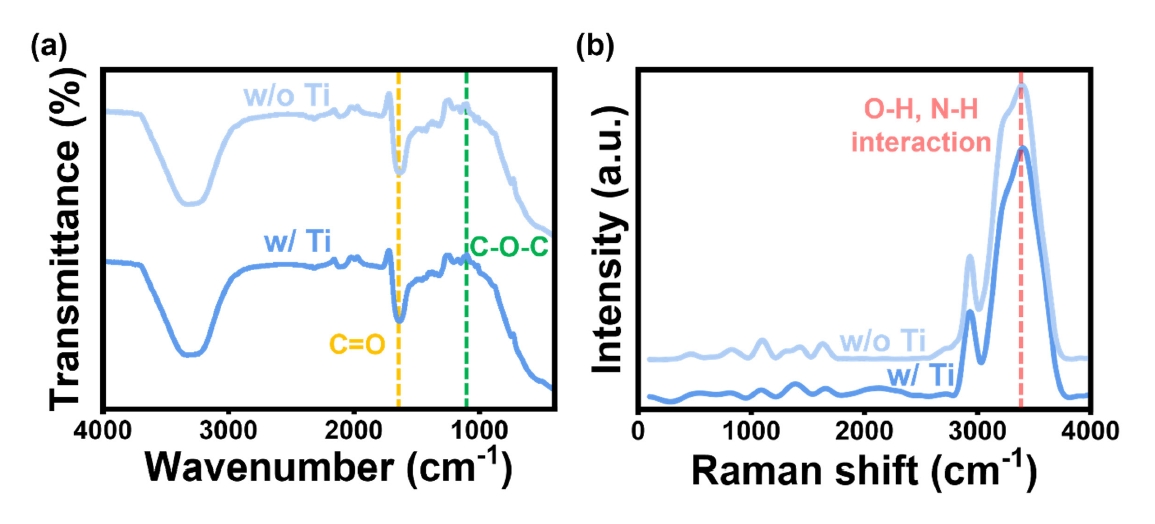
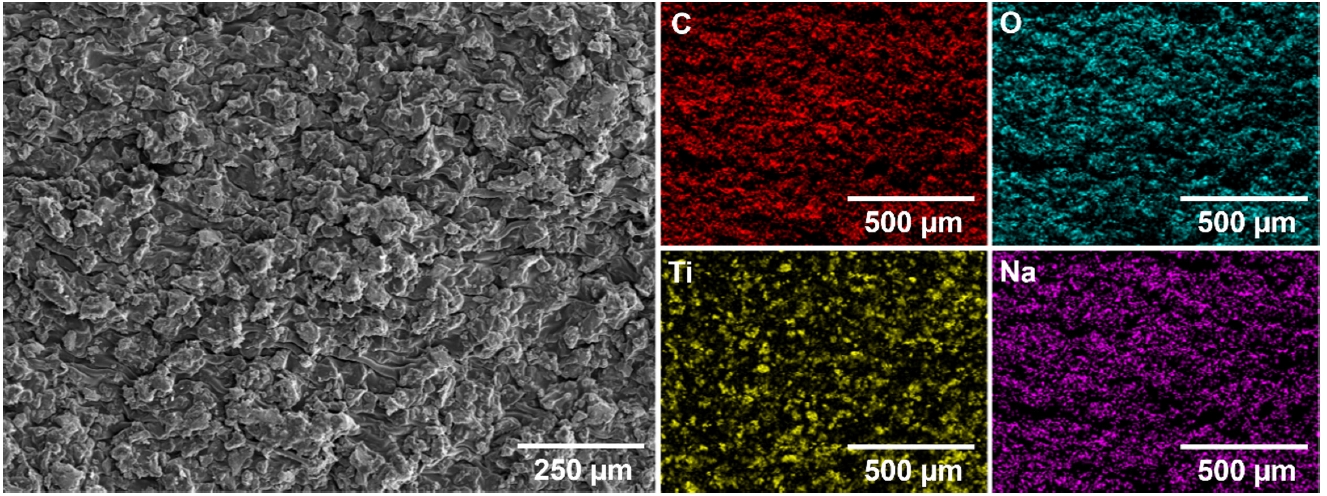
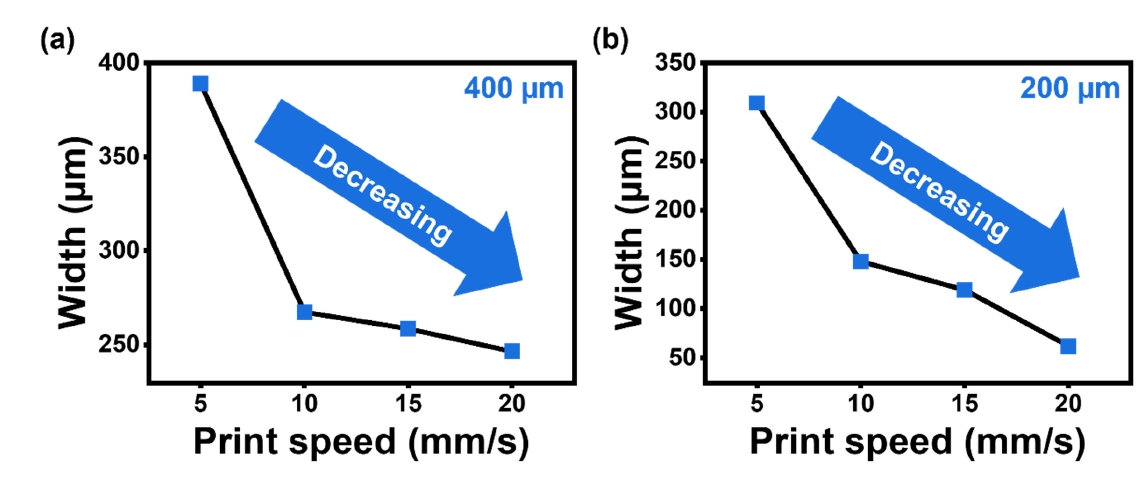
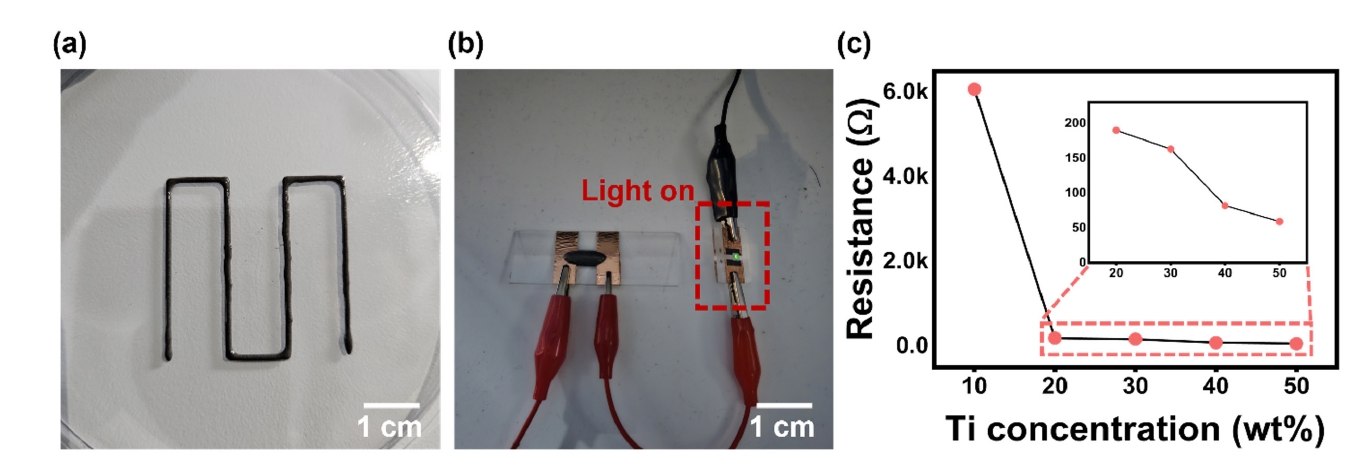
- 1. M. N. Chaudhari, R. B. Ahirrao and S. D. Bgul: Int. J. Res. Appl. Sci. Eng. Technol., 9 (2021) 5215.
- 2. D. M. Mattox: Me. Finish., 100 (2002) 394.Article
- 3. C. Zhou, T. Wu, X. Xie, G. Song, X. Ma, Q. Mu, Z. Huang, X. Liu, C. Sun and W. Xu: Eur. Polym. J, 177 (2022) 111454.Article
- 4. X. Han, G. Xiao, Y. Wang, X. Chen, G. Duan, Y. Wu, X. Gong and H. Wang: J. Mater. Chem. A, 8 (2020) 23059.Article
- 5. J. Liu, J. Garcia, L. M. Leahy, R. Song, D. Mullarkey, B. Fei, A. Dervan, I. V. Shvets, P. Stamenov, W. Wang, F. J. O'Brien, J. N. Coleman and V. Nicolosi: Adv. Func. Mater, 33 (2023) 2214196.Article
- 6. N. B. Alsaafeen, S. S. Bawazir, K. K. Jena, A. Seitak, B. Fatma, C. Pitsalidis, A. Khandoker and A. M. Pappa: ACS Appl. Mater. Interfaces, 16 (2024) 61435.ArticlePDF
- 7. J. Y. Sun, X. Zhao, W. R. Illeperuma, O. Chaudhuri, K. H. Oh, D. J. Mooney, J. J. Vlassak and Z. Suo: Nature, 489 (2012) 133.ArticlePDF
- 8. Y. Gad, R. Aly and S. Abdel‐Aal: J. Appl. Polym. Sci., 120 (2011) 1899.Article
- 9. S. S. Athukorala, T. S. Tran, R. Balu, V. K. Truong, J. Chapman, N. K. Dutta and N. Roy Choudhury: Polymers, 13 (2021) 474.Article
- 10. L. Geddes and R. Roeder: Ann. Biomed. Eng., 29 (2001) 181.Article
References
Figure & Data
References
Citations

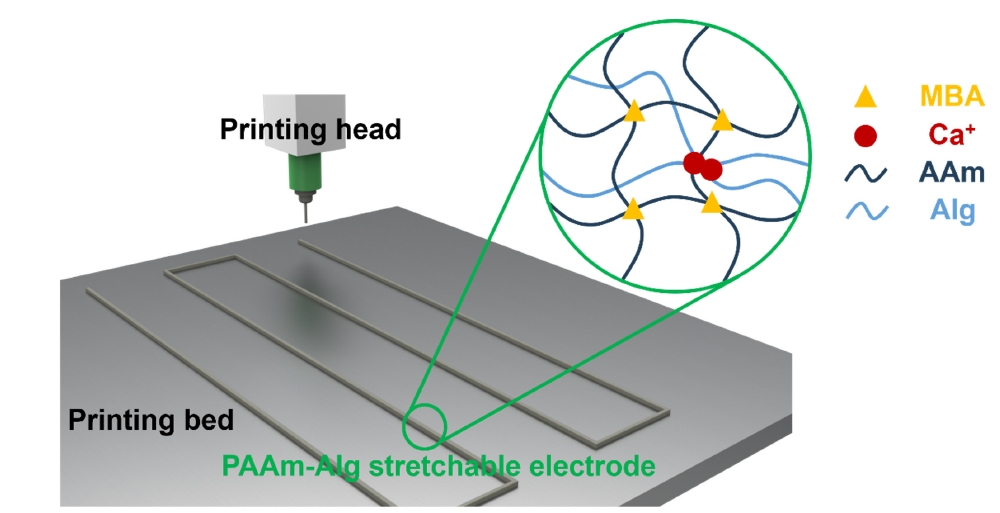




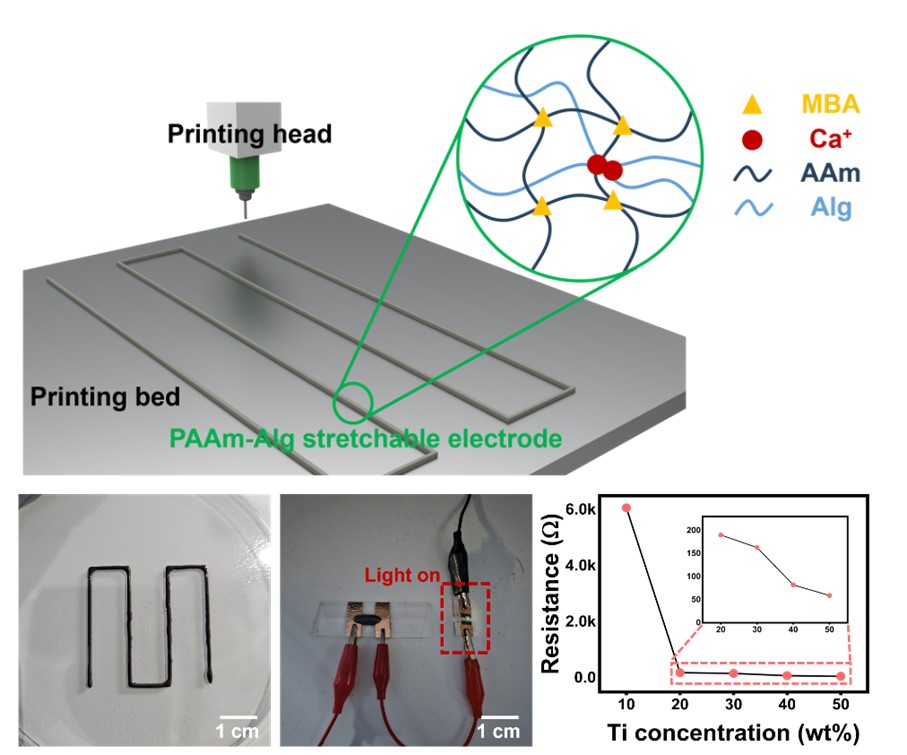
Fig. 1.
Fig. 2.
Fig. 3.
Fig. 4.
Fig. 5.
Graphical abstract
TOP
 KPMI
KPMI


 ePub Link
ePub Link Cite this Article
Cite this Article






